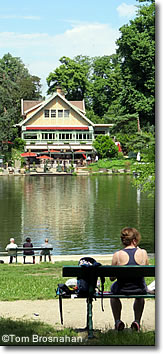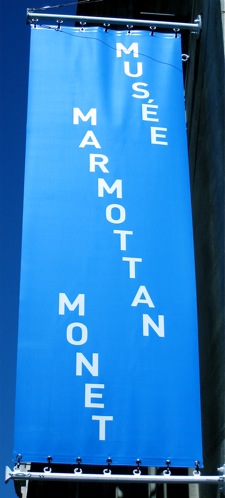 |
Musée Marmottan Monet, Paris | |
| Housing the world's largest collection of paintings by Monet, this small museum near the Bois de Boulogne is a quiet gem. | ||
|
|
|
Claude Monet is perhaps best known for his famous paintings of the Giverny water lilies, or Nymphéas, which can be seen at Paris's Orangerie, but Paris holds many other Monet treasures, the largest collection of which is at the Musée Marmottan Monet— the world's largest collection of Monet paintings, including his Impression, Sunrise (1872), the painting that gave its name to the style called Impressionism. The museum, housed in a former 19th-century hunting lodge at the edge of the Bois de Boulogne, is 4.3 km (2.7 miles) west of the Place de la Concorde (map), 30 minutes by Métro, but you can combine a visit to the museum with a stroll in the delightful Bois de Boulogne and a nice lunch at a fine restaurant on an island in one of Bois's lakes. More... The MuseumAcquired in 1882 by Jules Marmottan, the hunting lodge became a treasure house of art objects from the Napoleonic Empire assembled by Paul Marmottan, son of Jules. After Paul's death, the house and collection were bequeathed to France's Academie des Beaux-Arts. The ground floor and upper floor of the main museum building hold the Napoleonic collection as well as paintings by Renoir, Dégas, Gaugin, Manet, and Berthe Morisot; portraits by Renoir of Monet and his wife Camille; and a portrait by Monet of his son Michel Monet. The Monet CollectionIn 1957 the museum received a superb collection of Impressionist paintings assembled by Dr Georges de Bellio, doctor to Manet, Monet, Pissarro, Renoir and Sisley. Michel Monet, second son of Claude Monet, bequeathed his own large collection of his father's paintings in 1966, giving the Marmottan Monet the world's largest collection of the artist's works. The lower (subterranean) floor of the museum is devoted completely to Monet's paintings, including views of the Rouen Cathedral, the Japanese bridge at Giverny, the Gare Saint-Lazare, and some of his water lily paintings. Star of the collection is his famous Impression, Sunrise, a view of the port of Le Havre. The name and style of the painting was adopted to describe the similar work of other artists: Impressionism. An interesting small exhibit in the galleries focuses on Monet's vision and cataracts, which plagued him for many years and affected his color perception. His eye surgeon, Dr. Coutela, wrote in 1923, Il voit de loin suffisament pour un bourgeois tranquille, mais insuffisament pour un homme comme lui. (His distance vision is sufficient for an ordinary person, but insufficient for a person such as him.) Here are the best places to see Monet's paintings in Paris. Bois Stroll & LunchThe Marmottan Monet is in the 16th arrondissement, on the edge of the Bois de Boulogne. For a perfect art-and-nature day in Paris, combine your visit to the museum with a walk in the Bois and lunch at Le Chalet des Îles restaurant. More... Getting ThereTake Métro Line 9 toward Pont de Sèvres to La Muette, then walk west on Chausée de la Muette (map) keeping La Gare restaurant on your left, then through the Jardin du Ranelagh park along the Avenue de Ranelagh to Rue Louis Boilly and the museum (map). The Jardin du Ranelagh, by the way, is a natural oasis in the city with green lawn, trees, statues, and play areas for children. Museum AdmissionThe museum is open daily except Monday, and open into the evening hours on Thursday. There is sometimes a waiting line to enter. The Paris Museum Pass is not accepted at the museum. Métro: Line 9 to La Muette Musée Marmottan Monet
|
|
Impression,
Sunrise, by Claude Monet,
at the Musée Marmottan
Monet, Paris.
|




